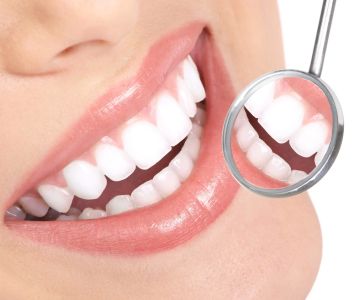What is a Gum Abscess?
A gum abscess is a pocket of infection (pus) that forms in the gums. It can be a painful and serious condition that requires prompt attention. Gum abscesses can occur due to various reasons, such as poor oral hygiene, gum disease, teeth grinding, or injury to the teeth or gums. Different names are used for this condition, like periodontal abscess and lateral periodontal abscess.
Symptoms and Causes of Gum Abscess
The most common symptom of a gum abscess is a swollen bump on the gums, accompanied by pain or tenderness. Other symptoms may include toothache, teeth sensitivity to hot or cold foods and beverages, bad breath, bad taste, swollen lymph nodes in the neck or jaw, pain while chewing, infection (pus), fever, and loose tooth. Bacteria invading the space between the teeth and gums, especially in cases of gum disease, is the most frequent cause of gum abscesses. Risk factors include poor oral hygiene, consumption of sugary foods and drinks, bruxism, teeth damaged by injury or trauma, and broken or damaged dental restorations.
Complications of Gum Abscess
If left untreated, a gum abscess can lead to various oral health problems like destruction of the ligaments and soft tissues around the teeth, bone loss in the jaw, and tooth loss. Research indicates that bacteria from the mouth can travel to other parts of the body, potentially causing conditions such as sepsis, heart inflammation, pneumonia, and brain abscess. It's crucial to seek immediate dental treatment to avoid these complications.
Diagnosis and Tests for Gum Abscess
A dentist diagnoses a gum abscess by reviewing the patient's symptoms, measuring the pockets around the affected tooth to determine if there's bone loss, and taking dental X-rays to assess the severity and spread of the abscess.
Management and Treatment of Gum Abscess
Treatment of a gum abscess is a dental emergency. It may involve draining the abscess by making a small incision in the gums and applying pressure to remove the infection. Scaling and root planing or gum surgery might be recommended to eliminate the infection. Antibiotics can be prescribed to reduce the risk of re-infection. In cases where the abscess has spread to the tooth and infected it, root canal treatment may be necessary to save the tooth. In severe instances, tooth extraction might be advised, and the dentist will discuss replacement options. Seeking dental attention promptly is essential.
Prevention of Gum Abscess
The best way to lower the risk of gum abscesses is by maintaining excellent oral hygiene. This includes brushing teeth two to three times a day using a soft-bristled toothbrush and fluoride toothpaste, flossing between teeth at least once daily, visiting the dentist for regular exams and cleanings, managing dry mouth if present, and using a mouth guard if one grinds or clenches their teeth.
Outlook and Prognosis of Gum Abscess
A gum abscess won't go away on its own and requires professional treatment. While most gum abscesses aren't life-threatening, an untreated one can, though rarely, result in serious conditions like sepsis. It's important to address the issue promptly for a better outcome.
Living With Gum Abscess
If you have a swollen and painful bump on your gums, it's advisable to schedule an appointment with a healthcare provider. In severe cases like fever, chills, nausea and vomiting, difficulty breathing, difficulty swallowing, or persistent pain not relieved by over-the-counter pain relievers, visiting the emergency room or calling 911 is necessary. When dealing with a gum abscess, it's helpful to ask the dentist questions such as the location of the abscess, the extent of the infection spread, the need for antibiotics, available treatment options, and ways to prevent it in the future.
Additional Common Questions About Gum Abscess
A gum abscess itself isn't contagious, but the bacteria causing it can spread. One should never attempt to pop a gum abscess and home remedies alone can't cure the infection. It's not possible to treat a gum abscess at home; professional dental help is essential.
In summary, a gum abscess is a serious dental condition that demands immediate attention. Understanding its causes, symptoms, and available treatments is crucial for maintaining good oral health. By practicing proper oral hygiene and seeking timely professional care when needed, one can effectively prevent and manage gum abscesses and their potential complications.






 TRU DENTAL4.0 (325 review)
TRU DENTAL4.0 (325 review) Agape Dental4.0 (10 review)
Agape Dental4.0 (10 review) Palo Alto Orthodontics5.0 (249 review)
Palo Alto Orthodontics5.0 (249 review) Divine Dentistry4.0 (434 review)
Divine Dentistry4.0 (434 review) Reynolds Family Dentistry of Richmond4.0 (19 review)
Reynolds Family Dentistry of Richmond4.0 (19 review) Hawthorn Woods Family Dental Care5.0 (535 review)
Hawthorn Woods Family Dental Care5.0 (535 review) The Importance of Oral Health Education During Pregnancy for a Healthy Pregnancy
The Importance of Oral Health Education During Pregnancy for a Healthy Pregnancy Best Tips for Brushing Your Teeth Properly for Healthy Gums: Essential Techniques for Oral Health
Best Tips for Brushing Your Teeth Properly for Healthy Gums: Essential Techniques for Oral Health Why Skipping Dental Checkups Can Lead to Bigger Oral Health Problems
Why Skipping Dental Checkups Can Lead to Bigger Oral Health Problems Advantages of Porcelain Dental Restorations
Advantages of Porcelain Dental Restorations How Can Diabetes Cause Tooth and Gum Problems? Preventing and Managing Oral Health Issues
How Can Diabetes Cause Tooth and Gum Problems? Preventing and Managing Oral Health Issues Healthy Habits for Promoting Good Oral Health and Hygiene: Tips for a Healthy Smile
Healthy Habits for Promoting Good Oral Health and Hygiene: Tips for a Healthy Smile